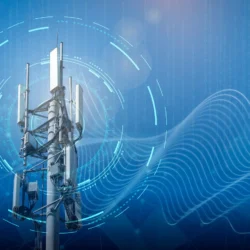Maintaining a secure and efficient facility requires regular access by maintenance staff. Whether for HVAC servicing, electrical work, or routine inspections, maintenance personnel need timely access to different areas of a building without compromising overall security. Implementing best practices for providing access ensures that facilities remain safe while allowing staff to perform their duties efficiently. Modern Access Control Systems play a crucial role in achieving this balance by regulating, monitoring, and auditing entry in a controlled manner.
Understanding the Need for Controlled Maintenance Access
Maintenance staff often require temporary or specialized access to restricted areas. Unregulated access can lead to security breaches, accidental disruptions, or exposure to sensitive equipment and information. Organizations must manage access in a way that protects both employees and the facility while maintaining operational continuity.
A well-implemented access system ensures that maintenance personnel can enter only the areas they need, at the right time, and with proper oversight. This reduces the risk of unauthorized access, theft, or equipment damage, while streamlining workflow for facility operations.
Benefits of Using Access Control for Maintenance Staff
-
Enhanced Security
With access control systems, organizations can assign unique credentials to maintenance staff, limiting entry to specific zones. Temporary access permissions can be granted for scheduled work, ensuring that staff cannot enter areas outside their responsibilities. -
Accountability and Audit Trails
Every entry by maintenance personnel is logged in the access control security systems. This provides a detailed audit trail for compliance, incident investigation, and operational reporting. It ensures that any unusual access patterns are quickly identified and addressed. -
Operational Efficiency
Automated accesscontrol solutions reduce delays by providing immediate access when needed. Maintenance staff no longer require manual approval for every visit, enabling faster completion of critical tasks. -
Safety Compliance
Controlled access ensures that maintenance staff adhere to safety protocols. For example, electrical rooms or hazardous zones can have restricted access, preventing accidental injury and maintaining regulatory compliance.
Best Practices for Providing Safe Access
1. Role-Based Access Control
Assigning permissions based on job role is a core feature of modern access control systems. Maintenance staff should have access only to the areas necessary for their work. This principle of least privilege limits exposure to sensitive areas while maintaining operational efficiency.
2. Temporary or Scheduled Access
Using temporary or time-bound credentials ensures that maintenance personnel can access a facility only during their scheduled work hours. The access system automatically deactivates credentials once the work period ends, reducing security risks and ensuring accountability within access control security systems.
3. Integration with Visitor Management
For third-party contractors, integrating accesscontrol with visitor management software allows organizations to pre-approve personnel and issue temporary credentials. This ensures that all visitors are documented, monitored, and subject to the same security protocols as internal staff.
4. Multi-Factor Authentication
Adding layers of authentication, such as PIN codes, smart cards, or biometric verification, increases security for maintenance access. A multi-factor access system ensures that credentials cannot be misused and that only authorized personnel gain entry.
5. Real-Time Monitoring and Alerts
Modern access control systems can trigger real-time alerts if maintenance staff attempt to enter restricted areas or access zones outside their assigned schedule. Security personnel can intervene promptly, preventing potential breaches or accidents.
6. Audit and Reporting
Regular review of maintenance access logs helps identify patterns, inefficiencies, or security concerns. Access control security systems provide detailed reports showing who accessed which areas, at what times, and for what purpose, supporting both operational oversight and compliance requirements.
Using Technology to Enhance Maintenance Access
1. Mobile Credentials
Mobile access solutions allow maintenance staff to use smartphones or wearable devices for authentication. This reduces the need for physical keys or cards, streamlines entry, and can be integrated with scheduling software to grant access only when needed.
2. Remote Access Management
Security teams can grant or revoke access remotely using cloud-based accesscontrol platforms. This is especially useful for off-site managers or during emergencies when immediate access changes are required.
3. Smart Locks and IoT Integration
IoT-enabled locks can provide real-time data on door status, access attempts, and environmental conditions. By integrating access system data with building management systems, organizations can enhance both security and operational efficiency.
Case Scenarios for Safe Maintenance Access
-
Corporate Offices
Maintenance staff can access server rooms or mechanical areas using time-bound credentials issued via the access control systems, ensuring security while supporting uninterrupted operations. -
Healthcare Facilities
Hospitals can restrict access to labs, pharmacies, and medical equipment areas. Maintenance staff receive temporary permissions for routine servicing, reducing risk to sensitive environments and patient safety. -
Industrial Plants
Factories and manufacturing facilities can assign role-based access for machinery rooms and hazardous areas. IoT-enabled access control security systems provide alerts if staff enter zones without proper authorization. -
Educational Institutions
Universities can manage access to laboratories, classrooms, and dormitories. Integration with visitor management ensures contractors or temporary maintenance staff follow strict access protocols.
Training and Awareness
Providing safe access is not only about technology. Proper training ensures maintenance staff understand security protocols and use credentials responsibly. Organizations should implement:
-
Orientation sessions on facility access policies
-
Instructions on emergency procedures and restricted zones
-
Awareness programs for secure handling of credentials and devices
By combining accesscontrol technology with training, organizations ensure that maintenance tasks are completed safely and securely.
Conclusion
Providing access to maintenance staff safely requires a combination of technology, policies, and oversight. Modern Access Control Systems allow organizations to assign role-based permissions, schedule temporary access, and monitor activity in real time. By integrating access control security systems with visitor management, mobile credentials, and IoT devices, businesses can ensure that maintenance personnel perform their duties efficiently without compromising security.
Platforms like XTEN-AV enable organizations to implement sophisticated access system solutions that balance operational needs with safety and security. By adopting these best practices, organizations can protect sensitive areas, maintain compliance, and ensure that maintenance activities support the smooth and secure functioning of the facility.
Read more: https://easybacklinkseo.com/sustainability-in-access-control-eco-friendly-hardware-and-software/


